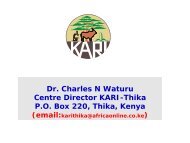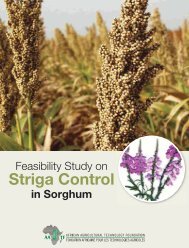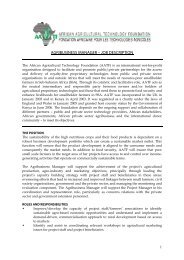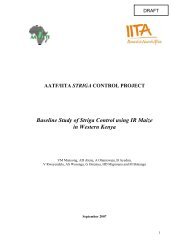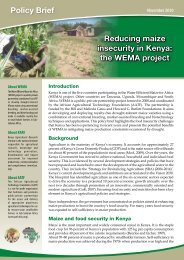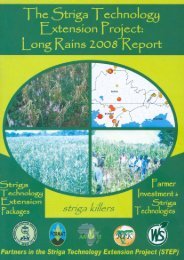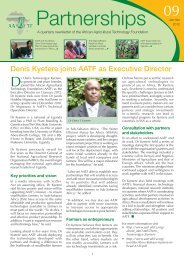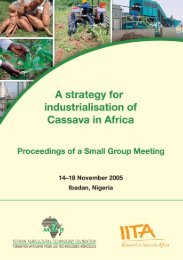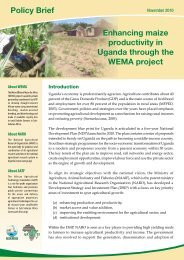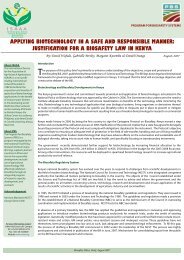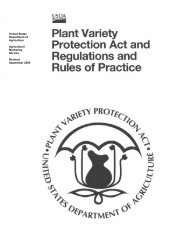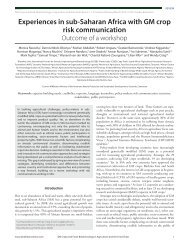AATF Inaugural Report - African Agricultural Technology Foundation
AATF Inaugural Report - African Agricultural Technology Foundation
AATF Inaugural Report - African Agricultural Technology Foundation
You also want an ePaper? Increase the reach of your titles
YUMPU automatically turns print PDFs into web optimized ePapers that Google loves.
A New Bridge to Sustainable <strong>Agricultural</strong> Development in Africa<br />
of the population – nearly 200 million people<br />
– lack food security (defined as having enough<br />
food to lead healthy and productive lives).<br />
Significant investments in infrastructure and<br />
new agricultural technologies contributed to a<br />
dramatic increase in agricultural productivity<br />
in Asia and Latin America, but investment and<br />
innovation were much more limited in Africa<br />
and agricultural productivity suffered as a result.<br />
Sub-Saharan Africa is in fact the only region in<br />
the developing world in which per capita food<br />
production has actually declined over the past<br />
two decades. Between 1980 and 1995, yields of<br />
staple crops fell by an average of 8% compared<br />
to an increase of 27% in Asia and 12% in Latin<br />
America.<br />
Nearly two-thirds of Africa’s poor people live<br />
in rural areas and depend on agriculture for their<br />
survival. Low and often declining farm-level<br />
productivity is a major cause of persistently low<br />
incomes and hunger. <strong>Agricultural</strong> science and<br />
improved technologies have, over the past 50<br />
years, made a huge positive impact on poverty<br />
and hunger in the developing world, but mainly<br />
in Asia and Latin America – Africa has yet to<br />
realise anywhere near the full potential that<br />
agricultural science has to offer.<br />
While this potential is very real, neither public<br />
nor privately owned agricultural research and<br />
development organisations can, on their own,<br />
readily exploit it. The top five international life<br />
science companies hold the majority of new agricultural<br />
intellectual property, and have developed<br />
innovative technologies, processes and products<br />
that can be readily adapted to improve the productivity<br />
of <strong>African</strong> farmers. But they have little<br />
commercial incentive to do so. These companies<br />
are compelled to focus on larger markets, due to<br />
12



